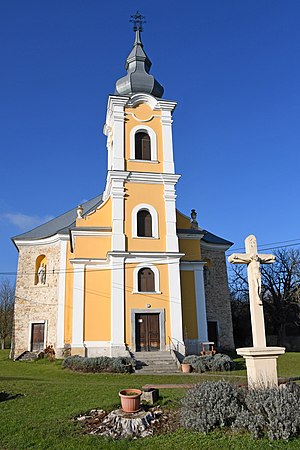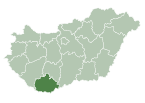
Bačka Palanka is a town and municipality located in the South Bačka District of the autonomous province of Vojvodina, Serbia. It is situated on the left bank of the Danube. In 2011 the town had a total population of 28,239, while Bačka Palanka municipality had 55,528 inhabitants.

Demographics of the Socialist Federal Republic of Yugoslavia, during its existence from 1945 until 1991, include population density, ethnicity, education level, health of the populace, economic status, religious affiliations and other aspects. During its last census in 1991, Yugoslavia enumerated 23,528,230 people. Serbs had a plurality, followed by Croats, Bosniaks, Albanians, Slovenes and Macedonians.
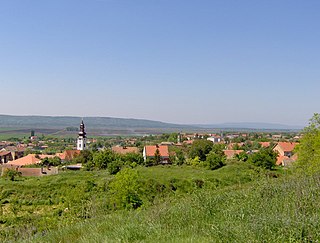
Titel is a town and municipality located in the South Bačka District of the province of Vojvodina, Serbia. The town of Titel has a population of 5,247, while the population of the municipality of Titel is 15,738. It is located in southeastern part of the geographical region of Bačka, known as Šajkaška.

Žabalj is a town and municipality located in the South Bačka District of the autonomous province of Vojvodina, Serbia. In 2023 the town Žabalj has a population of 9,107 and the municipality Žabalj has a population of 25,777. It is located in southeastern part of Bačka, known as Šajkaška. All settlements in the municipality have an ethnic Serb majority.
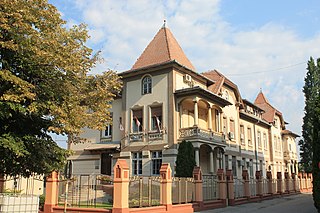
Beočin is a town and municipality located in the South Bačka District of the autonomous province of Vojvodina, Serbia. The population of the town is 7,839, whilst Beočin's municipality population is 15,726. There is also a Beočin Monastery from the 16th century in the municipality.
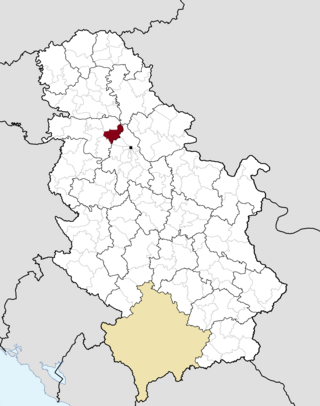
Stara Pazova is a town and municipality located in the Srem District of the autonomous province of Vojvodina, Serbia. The town has a population of 18,042, while Stara Pazova municipality has 65,792 inhabitants. The entrance into town from Inđija lies on 45th parallel north, it is half-way between the North pole and the equator.

Pećinci is a village and municipality located in the Srem District of the autonomous province of Vojvodina, Serbia. The village has a population of 2,581 (2011), while Pećinci municipality has 19,720 inhabitants.

Baranya was an administrative county (comitatus) of the Kingdom of Hungary. Its territory is now divided between present-day Baranya County of Hungary and Osijek-Baranja County of Croatia. The capital of the county was Pécs.

Kovin is a town and municipality located in the South Banat District of the autonomous province of Vojvodina, Serbia. The town has a population of 13,515, while the municipality has 33,722 inhabitants.

Knićanin is a village in Serbia. It is located in the Zrenjanin municipal area, in the Banat region, Vojvodina province. Its population is 2,034 and most of its inhabitants are ethnic Serbs (97.39%).
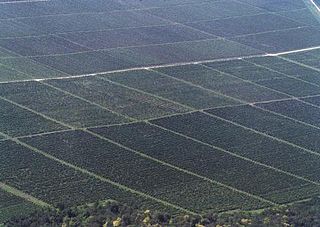
Villány is a town in Baranya County, Hungary that is famous for its wine. Residents are Hungarians, with minority of Croats, Serbs and Germans of Hungary. Until the end of World War II, the inhabitants were Danube Swabians, also called locally as Stifolder, because their ancestors once came around 1720 from Fulda (district). Mostly of the former German Settlers was expelled to Allied-occupied Germany and Allied-occupied Austria in 1945–1948, about the Potsdam Agreement. Only a few Germans of Hungary live there, the majority today are descendant of Hungarians from the Czechoslovak–Hungarian population exchange. They received the houses of the former Danube Swabians inhabitants.
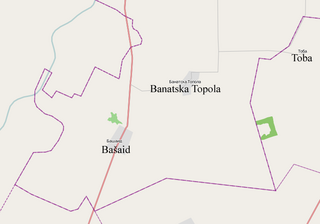
Banatska Topola is a village in the Kikinda municipality, in the North Banat District of the Republic of Serbia. It is situated in the Autonomous Province of Vojvodina. The village has a population of 1,066 of which 570 (53.47%) are ethnic Serbs and 434 (40.71%) are ethnic Hungarians.
The communist purges in Serbia in 1944–1945 are atrocities that were committed by members of the Yugoslav Partisan Movement and the post-war communist authorities after they gained control over Serbia, against people perceived as war criminals, quislings and ideological opponents. Most of these purges were committed between October 1944 and May 1945. During this time, at least 55,973 people died of various causes, including death by execution or by illness in retention camps. The victims – the vast majority of them deliberately summarily executed, without a trial – were of different ethnic backgrounds, but were mostly Germans, Serbs and Hungarians. Some contend that the killings were not planned, but were unorganised vendettas of individuals during the post-war chaos, or that those considered victims of execution instead died in battle against the Partisans.

Straža is a village in Serbia. It is situated in the Vršac municipality, in the South Banat District, Vojvodina province.
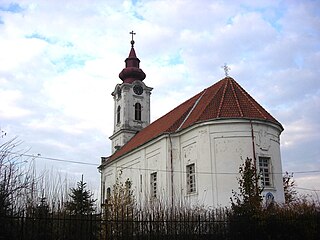
Stanišić is a village in Serbia. It is situated in the Sombor municipality, in the West Bačka District, Vojvodina province. The village has a Serb ethnic majority and its population numbering 4,808 people.

Babarc is a village and municipality in Baranya county, Hungary. Until the end of World War II, the inhabitants were Danube Swabians, also called locally as Stifolder, because their ancestors were from Fulda (district). Most of the former German settlers were expelled to Germany and Austria in 1945–1948, as a result of the Potsdam Agreement. Only a few Germans of Hungary live there, the majority today are the descendants of Hungarians from the Czechoslovak–Hungarian population exchange. They occupied the houses of the former Danube Swabian inhabitants.
Beremend is a village in Baranya County, Hungary on the Croatian border, it constitutes the southernmost point of the country. Residents are Magyars, with minority of Serbs. Until the end of World War II, the inhabitants were Danube Swabians, also referred to locally as Stifolder, because their ancestors arrived in the 17th and 18th centuries from Fulda (district). Most of the former German settlers were expelled to Allied-occupied Germany and Allied-occupied Austria in 1945–1948, consequent to the Potsdam Agreement. Only a few Germans of Hungary live there, the majority today are the descendants of Hungarians from the Czechoslovak–Hungarian population exchange. They got the houses of the former Danube Swabian inhabitants.

Illocska,, is a village in Baranya county, Hungary. Residents are Magyars, with a minority of Serbs and Danube Swabians. Until the end of World War II, the majority of the inhabitants were Roman Catholic Danube Swabians (Schwowe), their ancestors arrived in 1790 from Nagyszékely and Gyönk villages to Illocska. Most of the former German settlers were expelled to allied-occupied Germany and allied-occupied Austria in 1946–1948, following the Potsdam Agreement. Only a few Germans of Hungary live there, the majority today are the descendants of Hungarians from the Czechoslovak–Hungarian population exchange. They got the houses of the former Danube Swabian Inhabitants.
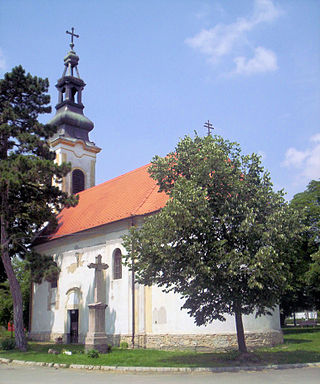
Majs is a village in Baranya County, Hungary. Residents are Magyars, with a minority of Danube Swabians and Serbs.
Lippó is a village in Baranya county, Hungary. Residents are Magyars, Germans of Hungary, with minority of Serbs. Until the end of World War II, the majority of the inhabitants were Danube Swabians, also called locally as Stifolder, because their ancestors arrived in the 17th and 18th centuries from Fulda (district). Most of the former German settlers were expelled to allied-occupied Germany and allied-occupied Austria in 1945–1948, under the Potsdam Agreement. Only a few Germans of Hungary live there, the majority today are the descendants of Hungarians from the Czechoslovak–Hungarian population exchange. They occupied the houses of the former Danube Swabian inhabitants.
